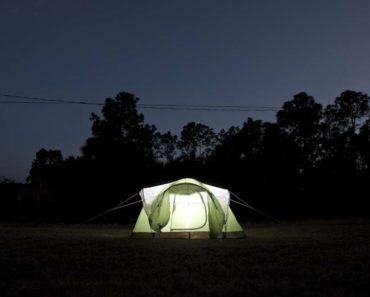When the name of the game is self-reliance and survival, there is one resource you must have a plan for Water.
If you look throughout history, people settle and build cities on – or very close to – water sources. Yes, this later became advantageous for shipping purposes in some areas, but our need for the wet stuff for drinking, cooking, cleaning, and sanitation cannot be underestimated.
It wasn’t uncommon for people to have a water well on their property either out of convenience or because a water source was just too far away.
Nowadays, a huge portion of the population relies on municipal water instead of private wells, but there are advantages and disadvantages to both, which I will discuss later on.
In this article I’ll be talking about:
- What a water well is, and how it compares to municipal water
- How to dig a well and the difference between a shallow well and deep well
- How much it costs to dig a well
What Is A Water Well?
It’s always good to start at the beginning, even if it seems obvious.
A water well is simply a hole dug into the ground that fills in and retains water. It is usually located close to a home to provide a convenient source of water. A water well works by tapping into the water table underground.
The water table is an area underground where water collects and the soil becomes saturated. The depth can vary depending on the region. In some areas, the water table may be very shallow and it doesn’t take much to dig a well. However, in other areas, a well may have to be much deeper, possibly a hundred feet or more.
Why Should You Consider Digging A Well
Let’s look at this from a standpoint of a municipal water system versus a well. Wells have been dug for centuries and continue to be dug today to provide an access point for water.
But why dig a well when you can just turn on the tap? Well (sorry for the pun), there are a couple of reasons.
Residential Wells May Be Cleaner
First, municipal water isn’t always as clean as you may think, and in some areas, it can be downright unsafe. Generally speaking, deep groundwater is going to be quite clean versus a lot of the dirty water that is drawn from surface water sources.
Drilled Wells Are The Only Option
The second reason is that a property may not be located close enough to tap into a municipal water supply or any other source of water, such as a river or lake. Again, even if a property is located close enough to a river or lake, it may be contaminated water and unsafe to drink.
Drilled Wells For Sustainability
Of course, if you are on this site, you may be considering starting a homestead, going off-grid, or just desiring to be more self-sufficient. Having your own water supply for human needs, livestock, or irrigation purposes not only allows you to do the above, but after installation the water from a well is basically free, not including general maintenance costs.
Shallow Well Vs. Deep Wells
Generally, there are two types of wells for you to think about on your property: a shallow well or a deep well.
Shallow Wells: Less than 50 Feet
Shallow wells are typically around fifty feet deep or less and occur where the water table is closer to the surface. Shallow wells are still tough work but can be dug by an individual with relatively simple tools.
A shallow well may be easier and cheaper to dig but the water may not be as clean, they are more prone to contamination, and they are susceptible to drying up.
Deep Wells: 50 Feet or More
Deep wells, on the other hand, can range from fifty feet deep to deeper, sometimes hundreds and hundreds of feet deep. These wells usually require specialized equipment and more work to create. However, the water is usually cleaner because all of the different layers of the ground act as a natural purification system. These wells also don’t dry up as quickly.
3 Ways To Dig A Well
There are more than three ways to dig a well, but let’s concentrate on the three listed below as they are common choices for an individual.
1. Digging a Well By Hand
Manually digging a well has been done throughout time and is still done today. It can be accomplished by one or more people and the tools involved can be low-tech such as a shovel, pick, bucket, rope, and ladder.
While deep wells can be dug in this manner, due to the amount of work involved, this method is better suited for shallow wells.
2. Drill Wells
Drilling a well utilizes the same technique as you see on an oil rig. A turning shaft with a bit on the end drills a hole into the ground, and the loose earth is removed. The shaft can be outfitted with an assortment of different bits depending on the ground being drilled, i.e. soil, sand, clay, rock, etc. Drilling can be done by hand or via a large machine.
When drilling by hand, a manual tool can be used where a person has to physically turn a handle to drive the bit into the ground, or a motorized drill, which may have an auger bit, can be used.
However, if the ground is tough or you need a deep well, your best option is to call a professional well drilling company. Well drilling companies are going to bring in a much bigger and more powerful drill rig on a large truck. This route is going to cost more, but it is also more efficient.
3. Driven Wells
This method utilizes brute force by driving rods into the ground with a heavyweight and gravity. The rods are put into a position where the well is to be dug and the large weight is lifted and dropped. Hammering the rod inch by inch into the ground. This method is commonly used in areas where soil conditions are softer.
The Process Of Digging A Well
Below is a general outline of how a water well installation would go:
1. Finding Water
You first need to find out if your property has accessible water beneath it. The easiest way is to contact a professional and have them drill test wells.
A test well is just a smaller version of an actual well and they will drill until they hit water. This lets you know if there is water under the property and how deep it is. A test well will also allow you to test the water quality. Water testing will let you know if you should move forward or not based on if you have clean water.
2. Pick a Location
Next, you need to pick where you want your well installed. The location of the well will depend on several factors and not just where you want it to be. Some of those factors include what the well will be used for, the condition of the ground, where the water can be accessed, and locating the well at an appropriate distance away from possible contamination sources.
3. Well Installation
Other than the drilling process, there are a few things to keep in mind:
Keeping The Well Intact
The interior of the well is going to need to be lined with a casing pipe that prevents the hole from collapsing in on itself after the drilling. Well installation can include casing pipe that is steel casing or PVC pipe. You should consult a professional about which type of casing pipe is the best for your situation.
Filtering
Well water should be filtered before use. Towards the bottom of the pipe, there is going to need to be a filter to keep small rocky soil and other debris from entering the piped water. This filter may be a fine mesh screen or it can even be accomplished by simply drilling small slits into the pipe.
Water Flow
Thirdly, you need a way to get the water to the surface.
A manual hand pump can be used, but most people are probably going to opt for a powered pump system. One type of pump sits on the surface and sucks the water up while submersible pumps are positioned at the bottom of the well and push the water up to the surface. Both of these types of pumps will require access to a power source.
If a power source isn’t readily available, then power lines will need to be run to the well.
Capping It Off
Lastly, a well cap will need to be installed at the surface. This seals the well off and helps to prevent contamination.
Storage Tank and Pressure Tank
Depending on your situation, there are two other items you may want to consider. A storage tank will allow you to keep a reservoir of pumped well water much closer to the surface or above ground. A storage tank also comes in a variety of sizes, ranging from fifty gallons to thousands of gallons.
A pressure tank looks like a small water tank and it provides additional pressure to your water system. Without these two items, your well water may have a low flow rate.
Below is a general overview of what the finished process of a private well for residential water would look like.
Installation Costs: Installing A Water Well Per Foot
The cost factors of digging for well water can vary quite a bit depending on the region, methods and materials used, and the depth of the well. These factors determine what your budget is going to be.
If you are digging for well water DIY style, the cost will include buying or renting tools, and the construction materials for putting the well together.
Calling a professional is the path that most people will likely take. It’s important to shop around and find a company that is in good standing in this field and to find different levels of bids. Most companies also offer free estimates.
According to ca.gov:
“Well drilling costs $15 to $25 per foot for the drilling process only. Installing a complete well water system costs $25 to $65 per foot, irrigation wells run $50 to $100 per foot, and geothermal wells are $15 to $40 per foot.”
Having said that, the average depth of a residential water well in the United States is around 142 feet. This gives you a ballpark estimate of between $2,130-$3,550 for just the drilling and between $3,550-$9,230 for a complete well.
The costs above may vary depending on the diameter of the well and the materials involved which may include a purification system, pressure tank, PVC cap, well casing (steel casing, PVC well casing pipe), water testing (determining the water quality) water storage tank, pump system, and any electrical work that needs to be done.
While this will increase the cost, if you are wanting to set up in an area where you need a well dug, you might also need a septic system. If that is the case and your budget allows for it you might be better off getting a well and septic system dug at the same time.
FAQs
How do I find out how deep the water table is in my area?
The USGS has a lot of information on this topic, and it can be accessed by clicking here. You can also check with your local government officials or a local drilling company as they usually keep records of the depths of the wells they dig.
How long does it take for water to reach the water table?
There isn’t a simple answer to this as it depends on the conditions of the ground in a region. According to watereducation.org, it can take hours, days, or years for water to infiltrate down into the ground.
What do I do if my well dries up?
When a well dries up, there is a chance that it can fill back up on its own – but that could take a long time. If you are dependent on a water well, it would be best to call a professional and get their opinion. There is a good chance that you will need to dig deeper or an entirely new well may need to be dug in a different spot.
What are sand point wells?
“A driven point well – sometimes called a sand point – is a small diameter well made by connecting lengths of 1-1/4″ or 2″ diameter steel pipe together with threaded couplings. Threaded to the bottom of the string of pipe is a drive-point well screen. The screen is usually 2 to 3 feet long with a hardened steel tip or drive-point.” – Wisconsin DNR
The sand point method is usually used to dig a shallow well where the water table is located beneath the surface, around 25 feet deep or so, and it typically uses a small diameter pipe.
Wrap Up
The upfront cost and work of digging a well on your property may seem like a lot, but water does not fall into the “want” column, it is a need. In recent years, water has been a dwindling resource in many regions, and you don’t want to find yourself high and dry.
You can save money and labor costs by digging your own well, but be sure to do plenty of research into this topic, including the soil type and soil conditions in your area, residential water requirements, water testing, and about the water resources in your area.
Access to water has always been critical to our survival, and it always will be. I highly encourage you to take a hard look at your water plan and flesh out the possibility of creating your own water well.
Thanks for reading, and stay prepared!
References:
















![Kevin Owens talks with Green Beret Zack Hughes [PODCAST] Kevin Owens talks with Green Beret Zack Hughes [PODCAST]](https://survivalcove.com/wp-content/uploads/2021/12/FieldCraft-Survival-Podcast-370x297.jpg)




















